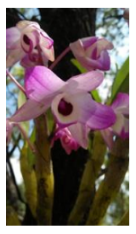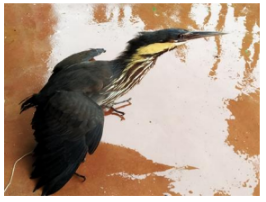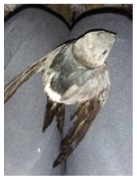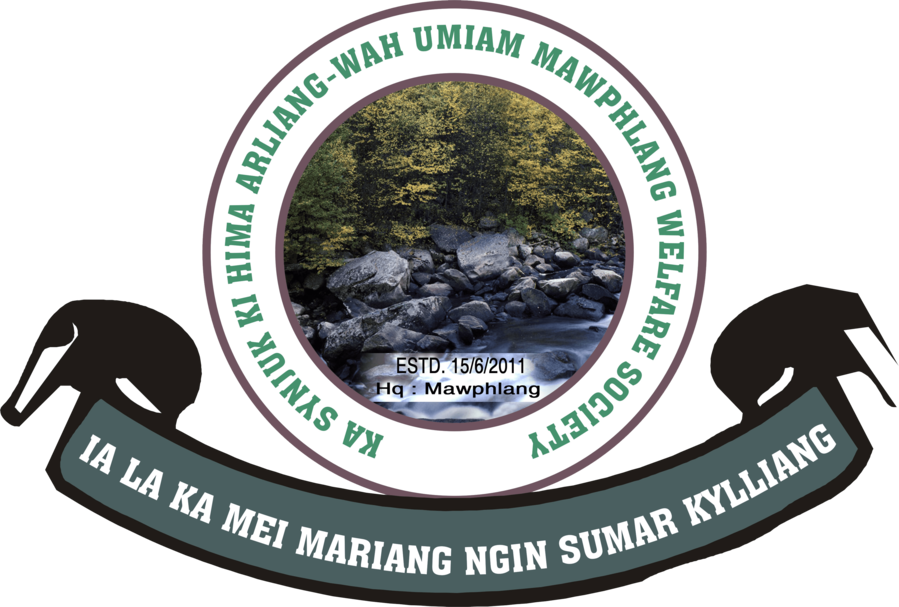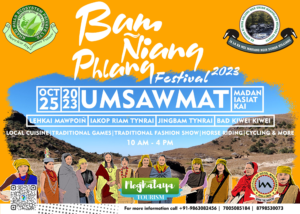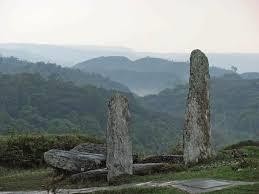
KHASI HILLS COMMUNITY PROJECT
2nd QUARTERLY UPDATE APRIL-JUNE 2020
The Khasi Hills Community Project is implemented by the Ka Synjuk Ki Hima Arliang Wah Umiam Welfare Society, a Federation of 10 indigenous Khasi governments (Hima) representing 62 participating communities guided by their village councils (Durbar).
PROJECT SUMMARY
The Khasi Hills Community Project is nearing 10 years of successful operation. The Project has
mobilized over 5,000 families to protect and restore 9,250 hectares of old-growth, montane
cloud forests in the Umiam River Watershed. In addition, project communities are working to
regenerate over 5,000 hectares of degraded forest. In return for their efforts to save their
community forests from logging, forest fires, mining, and conversion to agriculture, the
project provides communities with a diverse set of social and economic activities. The goal is
to increase household income in the 62 participating villages, where 90 percent of the families
are below India’s poverty line, while also improving public health through the provision of
clean drinking water systems and smokeless cooking technologies to reduce household air
pollution.
Response to COVID-19 Global Pandemic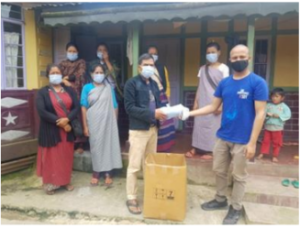 The COVID-19 outbreak continues to affect India as cases continued to rise throughout June. The 62 villages in the project area have been careful to follow social distancing procedures and have been wearing masks, many of them manufactured by women in project supported Self Help Groups. At the time of writing, the number of active cases in the State of Meghalaya have reached 433. Community facilitators and youth volunteers have continued with forest
The COVID-19 outbreak continues to affect India as cases continued to rise throughout June. The 62 villages in the project area have been careful to follow social distancing procedures and have been wearing masks, many of them manufactured by women in project supported Self Help Groups. At the time of writing, the number of active cases in the State of Meghalaya have reached 433. Community facilitators and youth volunteers have continued with forest
patrols, monitoring, and tree planting. In order to increase the availability and awareness of personal protective equipment (PPE), the project continues to distribute masks and sanitizer to those in need. Throughout the month of June, the team distributed face masks to the project extension villages, including Lumdiengiei and Kut.
Forest Habitat and Wildlife Conservation
Conserving the montane cloud forests along the steep banks of the Umiam River is a major goal of the project. The dense forests drop over 500 meters to the rushing waters of the River which subsequently flows into Bangladesh. The historic David Scott Trail constructed in the early 19th century, winds its way up the river gorge and has become a popular hiking route.
A portion of the trail is on project land and the community constructed rest stops and provides maps and guides. It continues to be an important eco-tourism community project. Forest conservation is complemented by community efforts to restore forest fragments on the hill tops above the river, creating a wildlife corridor that extends from the 2,000-meter plateau down to the Bangladesh plains. This habitat supports a broad range of birdlife, reptiles, and
mammals, as well as amphibians and fish, some of which are found only in this area. An important project strategy to reduce deforestation and forest degradation is community- based forest fire control. The project has also started training local Community Facilitators in monitoring the production, transport, and use of charcoal within the project area. Despite efforts, April brought about several forest fires as strong winds whipped through the state. Twenty-one hectares were affected by fire throughout the project area, which were caused by charcoal production and small fires used to warm herders that got out of control. In all of the cases, local villagers extinguished the fire.
Degraded Forest Restoration
With over 5,700 hectares of degraded forest land, the project seeks to restore these areas to improve wildlife habitat, increase the hydrological function of the watershed, and sequester atmospheric carbon. Each participating village identifies the degraded community forests that they want to restore and agrees to close the land to firewood collection, grazing, and agriculture. The villages receive support from the project to clear fire lines, remove weeds
and scrub, and open space for emerging saplings. Gaps are filled with seedlings and saplings. Nearly 2,000 hectares of land have been restored in this way over the past eight years. Villages are finding that restoring the watershed is resulting in better stream flow levels, as well as water availability in the dry season. Throughout the month of June 2020, eight villages took part in tree planting, with over 4,500 trees planted.
Clean Energy Transition
Household firewood consumption for cooking and heating is a major driver of deforestation in the project area as well as contributing to indoor smoke pollution that causes respiratory illness. In addition, fuelwood burning also is a major source of carbon emissions. To address these problems, the project wants to supply all project families with LPG cooktops, tanks, and electric rice cookers. Adoption of gas cooktops has reduced firewood consumption an average of 2.75 kgs of fuelwood per day for each household.
To get a better understanding of how families use fuel currently, including fuelwood and charcoal, the project is conducting surveys based on fuel needs and current arrangements. This will also provide information on which families are already implementing LPG and which would like to do so in the future. The impact of the assessment will be compiled once all the questionnaires and surveys are completed by the Lady Community Facilitators.
Sustainable Agriculture
With most families are dependent on farming for their income, improving agricultural practices has been a project priority. The project team seeks to assist families from a heavy dependence on low value potato cultivation to diversify into horticulture, green house vegetable growing, and organic farming. After the project distributed green houses, village families have been able to start cultivating cauliflower, broccoli, mint, coriander, eggplant, mustard leaf, chillies, and turnips to generate income. SHGs are also involved with vermicomposting to increase value-added products to their marketable goods and for use in their own agricultural practices.
Eco-Tourism and Cultural Conservation
The previous trail in the sacred grove had been damaged by the mass of tourists and visitors causing soil erosion and damage to the roots of forest trees (pre-Covid 19). The ban on tourists and movement of interstate travel, provided a good opportunity to work on repairing the pathway as requested by the Hima Mawphlang. The pathway was completed on 19th, May 2020.
Community Horticulture
As part of the project’s sustainable agriculture program which includes organic farming techniques, vermiculture, and composting the project team is also providing high value fruit trees to project families. This helps diversify farm produce, especially low value potato farming on which many families depend. Fruit trees also provide produce that can be converted to value added jams and jellies. The fruit trees are found to have a high survival
rate when protected from grazing animals.
Additionally, project sponsored polyhouses have provided shelter from the heavy rains to produce ornamental flowers and bedding plants which have a good market in Meghalaya. Currently farmers are growing Alstroemeria, Liliums, and Bird of Paradise within the polyhouse, however sales have been reduced due to the lockdown within the state but are expected to increase as movement in the state is now opening.
Mushroom Cultivation
The project continues to oversee a new mushroom cultivation programme and has been expanding this high value production system given the conducive moist, high elevation environment. Oyster mushrooms bring in a good return for local families once the mushroom house has been constructed and when the spores are available.
Community Development Grant
Each year the project provides the 62 participating communities with community development grants to fund projects that benefit many village families. The villages prepare proposals for priority projects. Over the past five years, most villages have asked for support for clean drinking water systems, and others have used their grants for updated washing areas, village sanitation, and cooking materials.
Project Updates
20 April 2020
The project has distributed a sewing machine to recipient who showed interest. He has been sewing straps used by farmers for carrying produce and material in cone baskets.
21 April 2020
The CF from Mawphlang monitored the polyhouse of Ryntihlang Farmers Club, Nongrum. The group is cultivating beans, mustard leaf, brinjal and chilies. The group had sold the mustard leaves at the rate of Rs 10/ bundle, which gave them a profit of Rs 2000/-.

28 April 2020
Temperate fruit trees were monitored in Hima Mawphlang and Hima Lyngiong and found to have a 98% survival rate and bearing new leaves. Special protections are recommended for areas where grazing animals can cause damage.
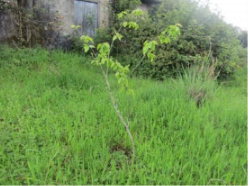
April 2020
The Forestry Team received data from the CFs on fuelwood consumption and collection and is being tabulated and interpreted for further implications.
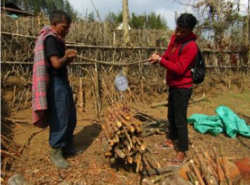
4 May 2020
On the 4th May 2020, the CF of Mawphlang monitored the polyhouse of Ibanrihunlang Blah in which ornamental flowers like Alstroemeria, Liliums, and Birds of Paradise are being cultivated in the polyhouse. The flower Alstroemeria has bloomed very beautifully inside the polyhouse, but the other flowers have not yet bloomed. There is a difficulty in selling the flowers due to the lockdown.
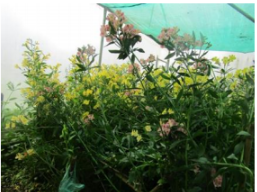
7-10 May 2020
The village of Lyngkien Sunei planted 400 tree saplings on the community land Lumsohpieng.
9 May 2020
The LWC Meeting of Laitkynsew was held on the 9th May 2020, a total of 12 members attended
the meeting. In the meeting they decided to construct a road to the tourist spot. They have
planned to do tree plantation on the 5th June 2020 at Lum Law Adong.
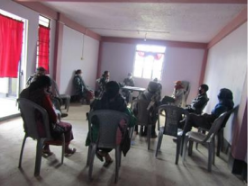
20 May 2020
The CF reported that trees were planted in the reserved forest of Mawbeh. Eight local varieties of 488 trees were planted in total.
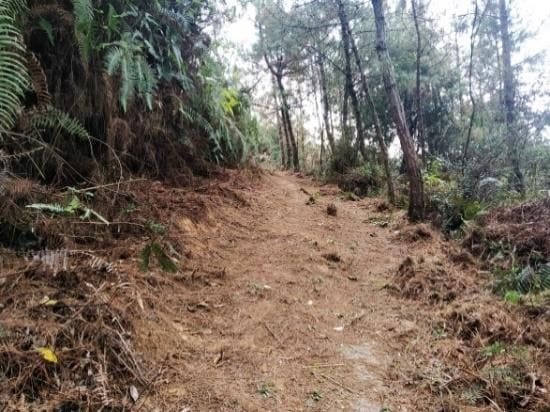
26 May 2020
Mr. Running Jala peach beneficiary of Umsawmat village of Hima Lyngiong had received peach saplings on 11th July 2016. The latest update reported that he had sold 95kgs of peaches on the 26th May 2020. The beneficiary was expecting to get more fruit this year as there was
no hail stone disturbance during the blooming season, but unfortunate heavy
rainfall caused the fruits to become rotten and production was not increased as was hoped.
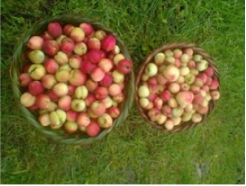
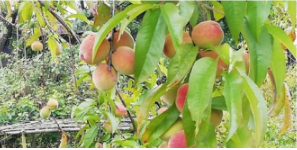
28 May 2020
The Laitylli SHG from Dongiewrim village of Hima Mawphlang was monitored by LCF on the 28th May 2020. They reported that they sold the vermicompost to benefit the group but there had been a challenge with the market. The LCF and the SET will become involved to help ensure customers.
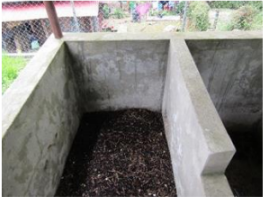
29 May 2020
The Forestry team trained the CFs of the Sohra area on monitoring charcoal that is produced from the community forest and imported from other regions of the state. A basic questionnaire was provided to them for monitoring.
2 June 2020
The Forestry Team along with the Asst. CF Hima Mawphlang monitored the tree plantation site at Lumthang, Sunei where 400 tree saplings were planted.
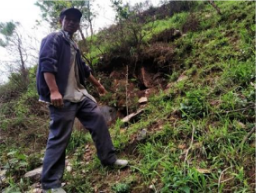
4 June 2020
The Forestry Team along with the CF of Hima Mawphlang inspected the site at Lumthangkanam, Wah-rina for tree plantation (3.3 ha area size) on observation of World Environment Day.
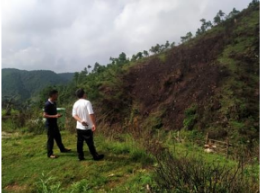
4 June 2020
Three SHGs met at Umsawmat village of Hima Lyngiong to discuss their completion of the first phase of mushroom cultivation. They are excited to continue the activity as a group because it brings in extra income. However, the lockdown has prevented the availability of spores for the second phase, and the Socio-Economic Team is waiting for more information from the Department of Agriculture on availability.
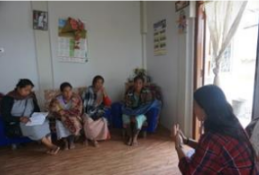
4 June 2020
The Socio-Economic Team monitored eight beneficiaries of fruit trees and found that they had sold 1,197 kg of fruit thus far in 2020, bringing in income of $520.
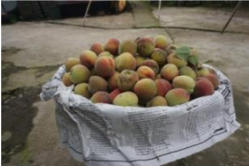
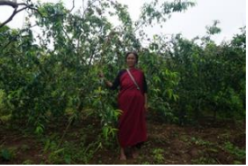
4 June 2020
The polyhouse of Iaidlang SHG village Thainthynroh of Hima Lyngiong: previously the production was in agriculture vegetable planting, but since 11th May 2020 this shifted from vegetable plantation to floriculture. Floriculture
brings in more income than vegetable production and fewer farmers were involved in floriculture in this location. The different types of flowers grown here are chrysanthemum, poppies, syntiew ksiar, and local flowers.
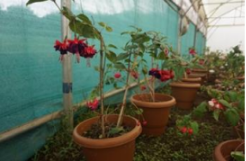
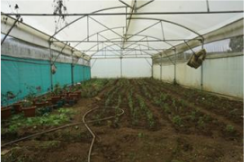
9 June 2020
The Forestry Team leader visited the site at Laitkynsew for monitoring of saplings that would be transplanted to the community protected forest at Law jong U Mong. The Forestry Team leader suggested to the CFs that they should plant more species to avoid monoculture. Species like Alnus, Myrica etc. were found at the site.
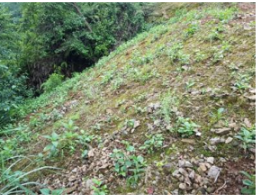
9 June 2020
The Socio-Economic Team visited the Fruit Garden Cleve Colony of Shillong to book temperate fruit trees including plums, pears, kiwi, and peached to be distributed to SHGs and beneficiaries. During this time, the team also visited the Mushroom Development Centre to purchase 20 packets of spawn/spores and book 500 spawn/spores for the next cultivation.
10 June 2020
The Forestry Team conducted a training on Monitoring of Charcoal at Kyrphei, Hima Mylliem to the Community Facilitators of Hima Mawphlang, Hima Lyngiong, Hima Nonglwai, Hima Nongspung and Hima Mylliem.
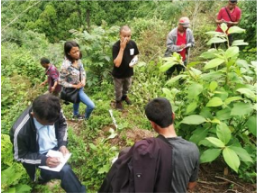
12 June 2020
The Forestry Team along with the CF, Asst. CF, Lady CF and Local Youth Volunteers of Hima Mawbeh carry out tree plantation at Law Adong Lum Iingdak, Mawbeh. A total of 1609 saplings were planted in the area.
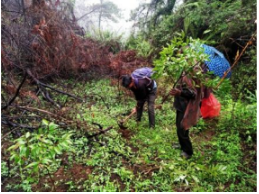
16 June 2020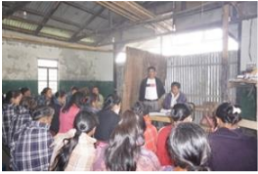 The CFs and the Socio-Economic Team organized an awareness program for new SHGs to be adopted at Perkseh village of Hima Lyngiong. The headman and 5 SHGs attended the program of which 30 both women and youths participated. On this day Miss Beautiful Lyngdoh (Field Reporting Supervisor) explained the different activities carried out by the project, introduced the tasks performed by the Socio- Economic team and proposed the SHG to collaborate with the Synjuk. At the end of the program the members of the village interacted with the staff about the group formation. The interaction session was very good since many of them asked many questions to clear their doubts. The group members informed the team that they want to collaborate with the project and soon they will write an application letter and send through the Community Facilitator.
The CFs and the Socio-Economic Team organized an awareness program for new SHGs to be adopted at Perkseh village of Hima Lyngiong. The headman and 5 SHGs attended the program of which 30 both women and youths participated. On this day Miss Beautiful Lyngdoh (Field Reporting Supervisor) explained the different activities carried out by the project, introduced the tasks performed by the Socio- Economic team and proposed the SHG to collaborate with the Synjuk. At the end of the program the members of the village interacted with the staff about the group formation. The interaction session was very good since many of them asked many questions to clear their doubts. The group members informed the team that they want to collaborate with the project and soon they will write an application letter and send through the Community Facilitator.
17 June 2020
1000 saplings namely peaches 200, plums 500, kiwi 100 and pears 200 have been distributed to 72 beneficiaries in 28 villages: SHG household members and individual households. The plantation of temperate fruit trees could raise
extra income.
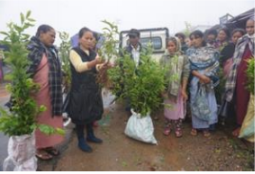
17 June 2020
Update of the polyhouse of Ryntihlang FC Nongrum village of Hima Mawphlang which was severed by the Cyclone Amphan on the 26th May 2020: The CF reported that the members were seeking funds to do the repairing. The club has carried out plantation nursing chili, brinjal and mustard leaves and was planting beans. They sold 80 bundles of mustard leaves.
17 and 18 June 2020
The Forestry Team Leader distributed seeds of Pinus patula and Exbucklandia populnea to the Hima Nongkhlaw, Sohra, Mawbeh and Laitkroh. The purpose of the activity was to plant the seeds in the fire affected area during the dry season.
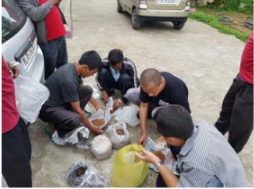
18 June 2020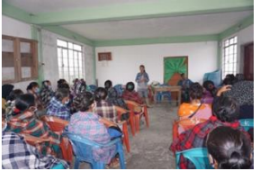 The CFs and the SET organized an awareness program for new SHGs at Thainthynroh village of Hima Lyngiong. The headman and 10 SHGs attended the program of which 60 women and youths participated. The headman opened the
The CFs and the SET organized an awareness program for new SHGs at Thainthynroh village of Hima Lyngiong. The headman and 10 SHGs attended the program of which 60 women and youths participated. The headman opened the
program by speaking towards project implementation. The aim of the meeting with the SHGs was to spread awareness on the different activities carried out by the project, and to introduce the tasks performed by the
Socio-Economic Team. Miss Beautiful Lyngdoh (Field Reporting Supervisor) gave a brief introduction on the project. The project focuses more on forest protection, conservation and regenerates the degraded forest. The Field Reporting Supervisor also mentioned that the project helps to promote the livelihood of the people by working with the SHGs, Farmer Clubs and individual beneficiaries. The group members informed the team that they want to
collaborate with the project and soon they will write an application letter and send through the CF.
24 June 2020
Five hundred saplings of peaches 100, plums 200, kiwi 150, chestnut 25 and black cherry 25 have been distributed to 60 beneficiaries in 27 villages, both SHGs and individual households.
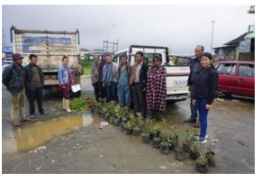
24 June 2020
The Forestry Team along with the Asst. CF of Hima Lyngiong monitored the tree plantation at Lumdidum, Lyngdoh Phanblang in which 507 tree saplings were planted by the Local Youth Volunteers.
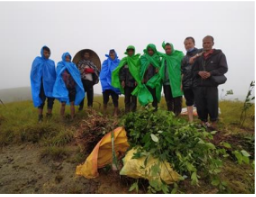
27 June 2020
The Forestry Team conducted a brief training to Bah David Khasain, CF of Hima Pamsanngut on monitoring of charcoal in the project area as a part of forest conservation at Nongwah, Hima Pamsanngut.
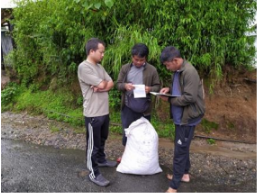
30 June 2020
The Forestry Team along with the CF and Asst. CF of Hima Mawphlang inspected the site for setting up a Home-Based Nursery by the Integrated Village Cooperative Society, Kyiem. The village Headman was also present.
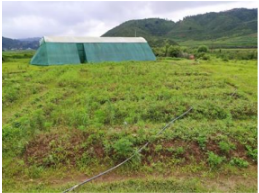
Biodiversity Monitoring:
During this quarter, a number of rare species were sited within the project area including pheasant eggs, hog deer, insects, medicinal herbs, orchids and an eagle.
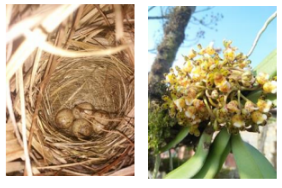
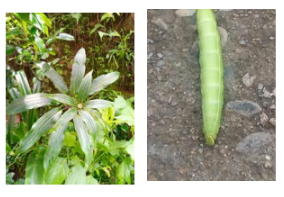
During this quarter, an injured black bittern (Ixobrychus flavicus) was rescued in Mawpalong village, Hima Nonspung and a langtait was rescued from Umlangmar village. The Forestry Team along with the Local Youth Volunteer and Lady CF initiated the procedure to hand over the birds to the Meghalaya Wildlife Department.
